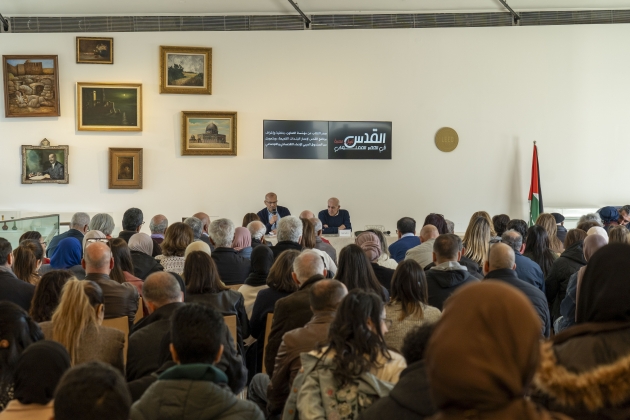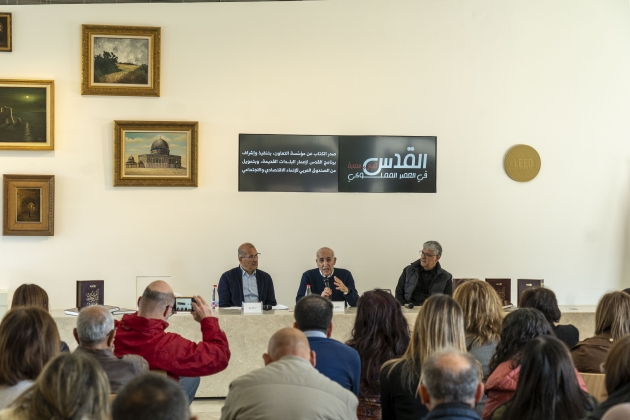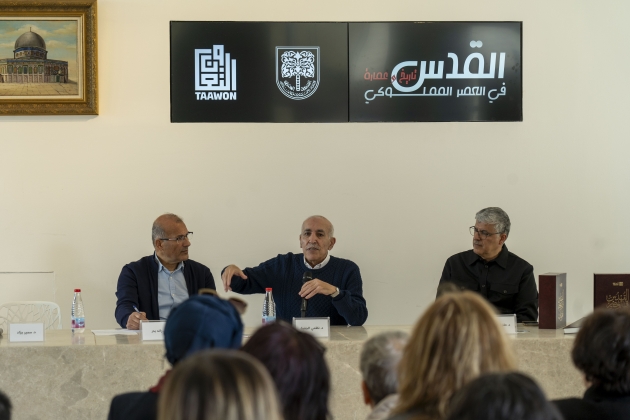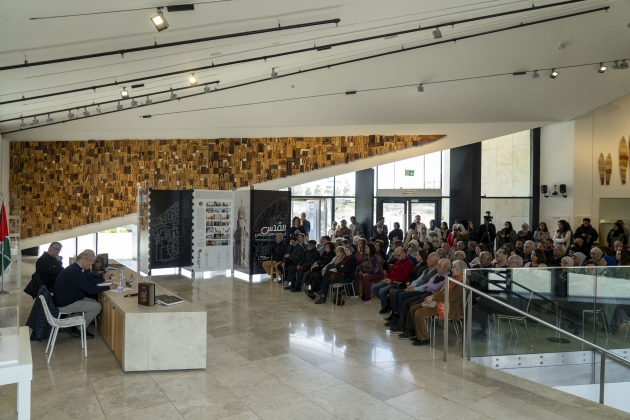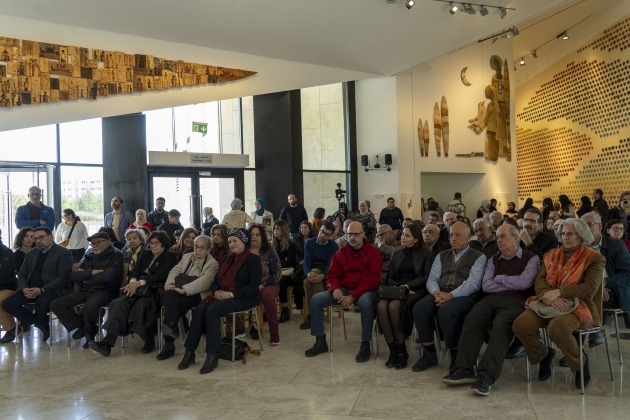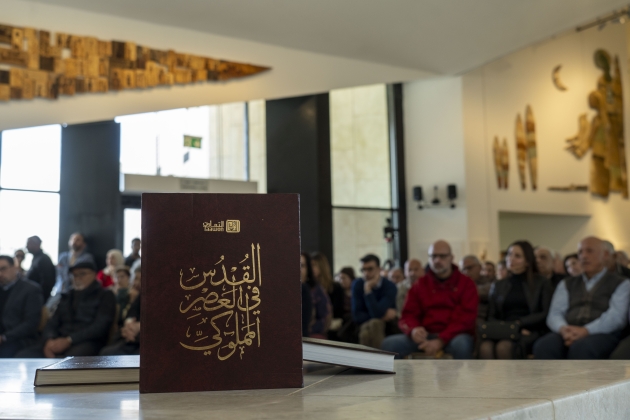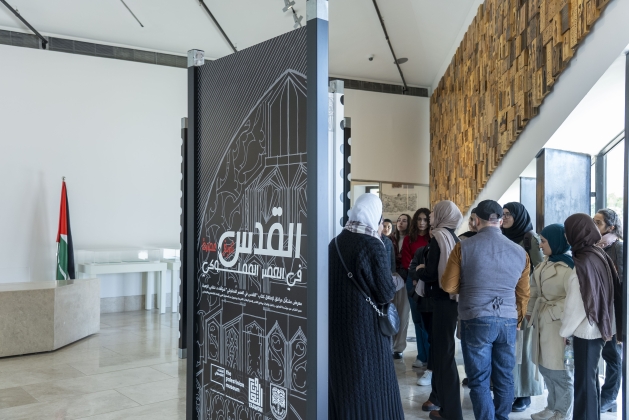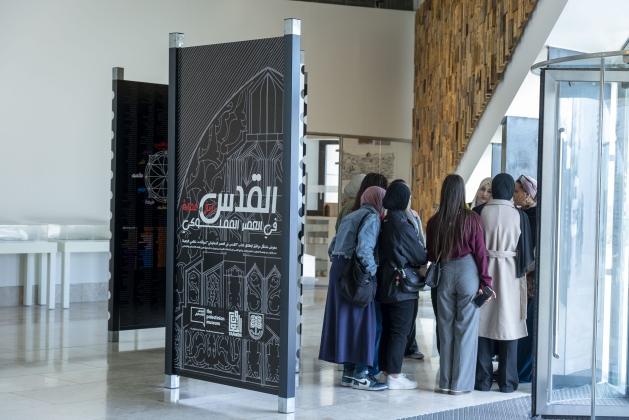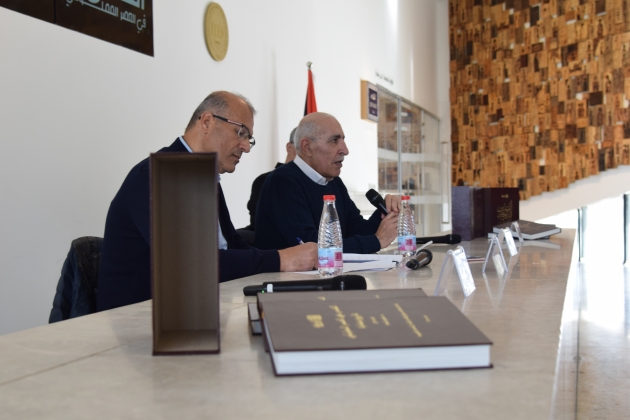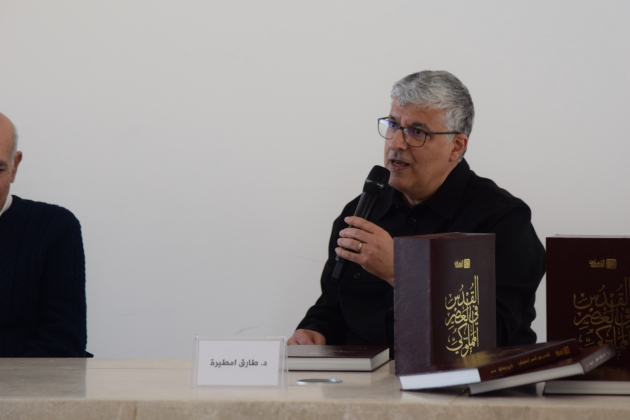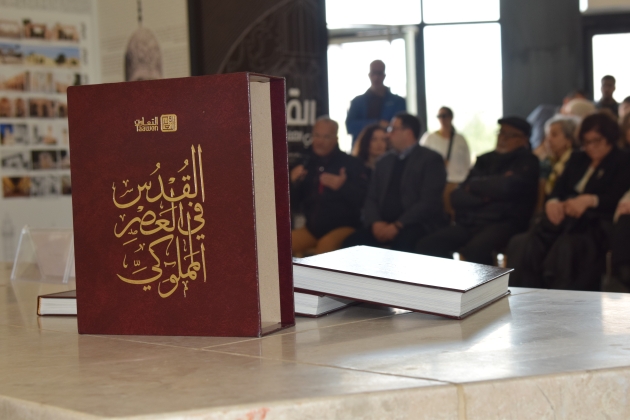Birzeit – Palestine: Taawon and The Palestinian Museum, announced today the launch of the book Jerusalem in the Mamluk Era: History and Architecture by Dr. Nazmi Al-Jubeh, along with an accompanying exhibition curated by Eyad Issa titled Mamluk Jerusalem, inspired by the chapters of the book and revolves around its themes and concepts.
The book is published by Taawon, implemented under the supervision of the Jerusalem Old Cities Revitalization Program, and funded by the Arab Fund for Economic and Social Development.
The book delves into the Mamluk period, which began in the mid-7th century (around 658 AH/1260 CE) and lasted for more than two and a half centuries. This era marked the dawn of a new political, cultural, and civilizational system. The book highlights Jerusalem's transformation into an Islamic city during this period, eliminating the cultural influences left by the Crusaders in religious, architectural, and cultural domains. It underscores the Mamluk efforts that made Jerusalem a prominent model of Mamluk civilization, surpassing other Mamluk cities in Egypt and the Levant. The book provides a comprehensive study of the political, economic, social, and religious life in Jerusalem at the time, relying on historical sources, documents, and original inscriptions. It sheds light on the Mamluks' relationship with the city, their management of it, its religious diversity, and its urban planning. The book places particular emphasis on Al-Aqsa Mosque, tracing its restoration and reconstruction, along with architectural additions made during the era.
Dr. Nazmi Al-Jubeh, the book’s author, stated, "This is the first book to combine the various dimensions of history and architecture in Mamluk Jerusalem. It details the Mamluks' complex relationship with the city and how they utilized it in international relations." He added, "The Mamluks were largely successful in asserting Jerusalem's cultural identity, steering it away from a Crusader identity."
The accompanying exhibition draws inspiration from the book’s chapters, showcasing key Mamluk-era buildings that still stand today, such as schools, mosques, caravanserais, bathhouses, residential buildings, and endowments. These architectural features reveal the unique character of Mamluk Jerusalem, harmonizing with the local heritage and the city's spirit while maintaining its authentic cultural identity. The exhibition offers visitors the opportunity to explore significant landmarks of Jerusalem from that era through a collection of photographs, maps, and layouts.
Dr. Tareq Emtairah, Director General of Taawon, remarked, "The launch of the book Jerusalem in the Mamluk Era: History and Architecture and the exhibition Mamluk Jerusalem represents a significant step in documenting Jerusalem’s history and highlighting its unique cultural heritage. At Taawon, we believe that preserving Palestinian cultural and historical heritage is a collective responsibility. This book is one of the ways we aim to strengthen Palestinian cultural identity and counter ongoing attempts at erasure. It sends a message to the world that Jerusalem will remain firmly rooted in its identity through history".
Curator Eyad Issa explained, "This exhibition complements the book visually, providing a general overview of its chapters and elements. It takes us on a visual journey often absent from the text, highlighting the aesthetic aspects of Mamluk architecture. It aims to encourage people to read the book, which sheds light on a pivotal era in Jerusalem’s history. Understanding this era is crucial for preserving the city’s identity amid continuous attempts to alter its features."
The book launch event will take place at the Palestinian Museum, and the exhibition will remain on display until the end of January 2025. Following this, the book and exhibition will tour several locations, including Jerusalem, Bethlehem, and Nablus, to deepen public awareness of Palestine’s rich history, arts, and culture across centuries.
This initiative is part of the Palestinian Museum and Taawon’s ongoing efforts to highlight and protect Palestinian cultural heritage, especially during this critical phase where cities and historical sites face grave challenges to their identity and existence.
The Palestinian Museum – Non-Governmental Association is dedicated to supporting an open and vibrant Palestinian culture locally and internationally. The Museum presents and contributes to new narratives on Palestinian history, culture, and society from a new perspective. It also offers spaces for creative ventures, educational programmes, and innovative research. The Palestinian Museum is Swiss-registered with a branch in Palestine.
Taawon is a non-profit, civic organization launched in Geneva in 1983 by a group of Palestinian business leaders and intellectuals. Taawon today is one of the largest developmental organizations in Palestine and the diaspora camps in Lebanon. It touches the lives of more than one million Palestinians annually. Since its establishment, Taawon has invested funds reaching nearly US $900 million, dedicated to development and relief programs.
Taawon maintains a presence in Palestine, Jordan, Lebanon, Switzerland, and in Great Britain through its sister organization; interventions are implemented to reinforce the steadfastness of Palestinian citizens in Palestine and the refugee camps in Lebanon.

